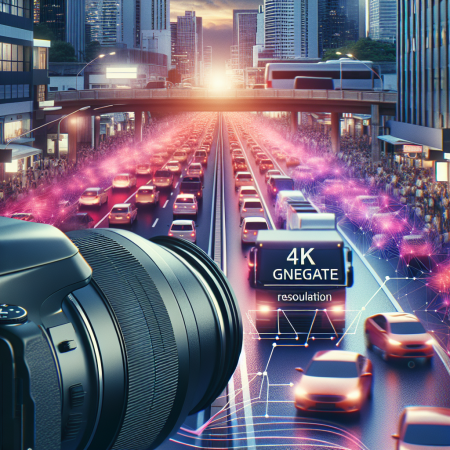Multiply traffic by creating shareable infographics aligned with 2025 design trends
Understanding the Importance of Shareable Infographics
Why Infographics Work
First things first, infographics are an amazing tool for communication. They combine visuals and information in a way that makes it super easy for people to digest content. Personally, I find that when visuals are included, my brain is way more engaged. It’s like when you see a beautiful dish: you want to dig in. Infographics have that effect!
On social media, where attention spans are shorter than a Vine video, a well-designed infographic stands out. You’re not just sharing data; you’re creating a visual narrative that can go viral. Trust me, I’ve seen posts transform just because they included a cool graphic.
Infographics can help drive traffic to your site and increase brand awareness. And let’s be real: having people share your content feels amazing! With the design trends of 2025 leaning towards bold colors and unique aesthetics, creating eye-catching infographics can set you apart from the noise.
Design Trends to Embrace in 2025
Bold Colors and High Contrast
One of the biggest trends I see on the horizon is the use of bright, bold colors. Gone are the days of muted tones; in 2025, we’re going to see color palettes that pop! This style not only attracts attention but also evokes emotion in a more profound way. Think of it as your graphic shouting, “Look at me!”
When I started using brighter colors in my infographics, the engagement skyrocketed. A splash of neon against a dark background? It’s like the perfect contrast in a relationship—sparks fly every time! Just remember, while it’s fun to experiment, ensure it aligns with your overall branding.
Combining high contrast with engaging typography can elevate your designs even more. Keep an eye on font trends too—mixing sans serif with artistic scripts can create a fresh yet cohesive look.
The Power of Data Visualization
Simple Yet Effective Charts
When I create infographics, I always focus on how data is presented. People tend to overlook simple charts because they’re too technical. Instead, I’ve found that making a data-centric visual accessible can really help your audience absorb the information. Think of pie charts that actually look tasty!
Infographics providing a clearer understanding of complex information encourage shares. I once turned a simplified line graph into a more engaging visual narrative, and honestly, it took off. Understanding is key; the easier you make it, the more willing people are to share.
So, don’t just throw a bunch of numbers on a page. Tour your data, create an engaging story, and the shares will follow. Data can be exciting if presented right!
Creating Engaging Content
Compelling Stories Through Visuals
Now, let’s chat about the storytelling aspect. I can’t stress enough how important it is to create a narrative. Every infographic I craft starts with a story. Just like how a good movie hooks you in, your infographic should grab attention from the very first glance.
Creating that narrative can help your audience connect emotionally. I usually think about the problem and the solution; it’s all about answering “What’s in it for me?” You need to address your audience’s feelings and how the information impacts them.
This approach doesn’t just make your infographic shareable; it gives it a purpose. Infographics that have a meaning pave the way to more conversations and shares.
Promoting Your Infographics
Social Media Strategies
Once you have your infographic ready, it’s absolutely crucial to promote it effectively. Social media is where the magic happens! I love testing out different platforms to see where my infographics get the most love. For me, Pinterest and Instagram tend to be the kings of graphic sharing.
Engage with your audience by asking questions or starting discussions around the infographic. The more interaction you have, the more likely it is that people will share it further. I’ve built relationships with my audience by being involved—it’s nearly effortless once you start.
Remember to optimize your post. A killer caption, strategic hashtags, and a call to action can propel your infographic into the online stratosphere. Don’t leave your masterpiece hanging—share it like you mean it!
FAQs
1. What makes an infographic effective?
An effective infographic combines compelling design with clear, concise information that tells a story. It should be engaging, easy to read, and visually appealing to capture the audience’s attention.
2. How can I design my infographic to be trendy?
To be on-trend, embrace bold colors, simplistic data visuals, and ensure it aligns with current aesthetics in your industry. Following design trends for 2025 can really help your infographic stand out.
3. What platforms should I use to promote my infographics?
Social media platforms like Pinterest, Instagram, and Twitter are fantastic for sharing infographics. Each platform has its unique style, so tailor your posts accordingly for the best results.
4. How long should an infographic be?
The length of an infographic can vary, but keeping it concise is key. Aim to convey your message in a way that doesn’t overwhelm the viewer; one to two scrolls is ideal.
5. Can infographics help with SEO?
Absolutely! Infographics can drive traffic to your site, enhance engagement, and encourage backlinks when shared widely, all of which can boost your SEO efforts.
Related Content
- How to Create a Marketing Strategy That Outperforms Your Competition
- The Biggest Challenges of Owning Your Own Business (And How to Overcome Them)
- How to Use Newsletters to Promote Your Products and Services
- Unleash record-breaking traffic by mastering web accessibility and UX in 2025
- 6 Things You Didn’t Know You Could Do With Driving Website Traffic


